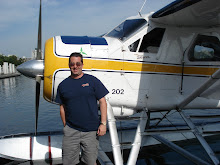

Reginald Victor Jones, CH CB CBE FRS was an English physicist and scientific military intelligence expert who played an important role in the defence of Britain in World War II.
Born in Herne Hill, Jones was educated at Alleyn's School, Dulwich and Wadham College, Oxford where he studied Natural Sciences. In 1932 he graduated with First Class honours in physics and then, working in the Clarendon Laboratory, completed his DPhil in 1934. Subsequently he took up a Senior Studentship in Astronomy at Balliol College, Oxford.
In 1936 Jones took up the post at the Royal Aircraft Establishment, Farnborough, a part of the Air Ministry. Here he worked on the problems associated with defending Britain from an air attack.
In September 1939, the British decided to assign a scientist to the Intelligence section of the Air Ministry. No scientist had previously worked for an intelligence service so this was unusual at the time. Jones was chosen and quickly rose to become Assistant Director of Intelligence (Science) there. During the course of the Second World War he was closely involved with the scientific assessment of enemy technology, and the development of offensive and counter-measures technology. He solved a number of tough Scientific and Technical Intelligence problems during World War II and is generally known today as the "father of S&T Intelligence".
He was briefly based at Bletchley Park in September 1939, but returned to London in November. He decided that the Oslo report received in 1939 was genuine, though the three Service Ministries regarded it as a "plant" and discarded their copies: "... in the few dull moments of the War, I used to look up the Oslo report to see what should be coming along next
Jones's first job was to study "new German weapons" which were believed to be under development. The first of these was a blind bombing system which the Germans called Knickebein. Knickebein, as Jones soon determined, used a pair of radio beams which were about one mile (1.6 km) wide at their point of intersection. German bombers flew along one beam, and when their radio receivers indicated that they were at the intersection with the second beam, they released their bombs.
At Jones's urging, Winston Churchill ordered up an RAF search aircraft on the night of 21 June 1940, and the aircraft found the Knickebein radio signals in the frequency range which Jones had predicted. With this knowledge, the British were able to build jammers whose effect was to "bend" the Knickebein beams so that German bombers for months to come scattered their bomb loads over the British countryside. Thus began the famous "Battle of the Beams" which lasted throughout much of World War II, with the Germans developing new radio navigation systems and the British developing countermeasures to them.
As far back as 1937, R. V. Jones had suggested that a piece of metal foil falling through the air might create radar echoes. He, and Joan Curran, were later instrumental in the deployment of "Window"; strips of metal foil dropped in bundles from aircraft which then appeared on enemy radar screens as "false bombers". This technology is now known as chaff and contrary to the popular belief, was also known to the Germans at the time. Both parties were reluctant to use it out of fear that their enemy would do the same: this delayed its deployment for almost two years.
Jones also served as a V-2 rocket expert on the Cabinet Defence Committee (Operations) and headed a German long range weapons targeting deception under the Double Cross System.
n 1946 Jones was appointed to the Chair of Natural Philosophy at the University of Aberdeen, which he held until his retirement in 1981. He did not want to stay in Intelligence under the proposed postwar reorganisation. During his time at Aberdeen, much of his attention was devoted to improving the sensitivity of scientific instruments such as seismometers, capacitance micrometers, microbarographs, and optical levers.
Jones was appointed Commander of the Order of the British Empire (CBE) in 1942, for the planning of a raid on Bruneval to capture German radar equipment (Churchill had proposed that Jones should be appointed a Companion of the Order of the Bath (CB) but the head of the Civil Service Sir Horace Wilson threatened to resign as Jones was only a lowly Scientific Officer, and the CBE was a compromise[2])[3][4]; he was subsequently appointed CB in 1946;[5] and Companion of Honour (CH) in the 1994 Queen's Birthday Honours.[6] He was elected Fellow of the Royal Society in 1965, and received an honorary DSc from the University of Aberdeen in 1996.
His autobiography, Most Secret War: British Scientific Intellige nce 1939-1945, formed the basis, pre-publication, of the BBC One TV documentary series "The Secret War", first aired on 5 January 1977, in which Jones was the principal interviewee.In 1993 he was the first recipient of the R. V. Jones Intelligence Award, which the CIA created in his honour
